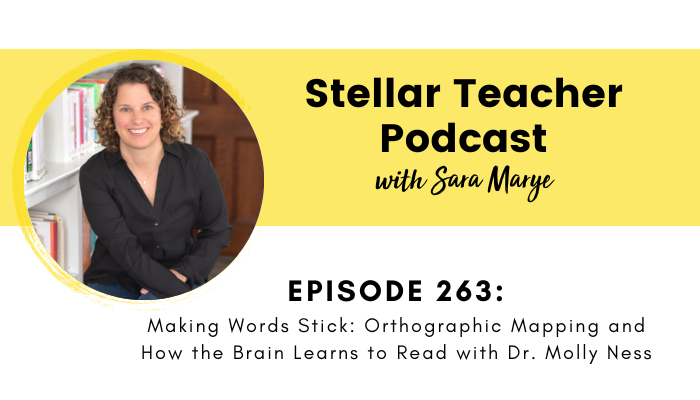
Click play below to listen to a teacher-friendly guide to orthographic mapping and fluency.
What is orthographic mapping—and why does it matter so much for your upper elementary readers? In this episode, I’m joined by Dr. Molly Ness, educator, researcher, and co-author of Making Words Stick, to unpack the science behind how students store and retrieve words. We break down what orthographic mapping actually is, how it develops, and why it’s a missing piece for so many students who struggle with fluency and comprehension.
You’ll learn about a simple, four-step instructional routine that supports orthographic mapping in a way that’s practical, flexible, and effective across all grade levels. From segmenting sounds to exploring word meaning and usage, Dr. Ness shares how you can make this invisible cognitive process visible in your classroom instruction—even without a fancy program or curriculum.
If you teach reading in grades 3–5, this episode is packed with insights and tools to help you feel more confident supporting students who struggle to decode and read automatically. Click play and discover how focusing on orthographic mapping can transform your reading instruction—one word at a time.
Meet Molly
Dr. Molly Ness
Molly Ness is a former classroom teacher, a reading researcher, and a teacher educator. She earned a doctorate in reading education at the University of Virginia, and spent 16 years as an associate professor at Fordham University in New York City. The author of six books, Molly served on the Board of Directors for the International Literacy Association and is a New York state chapter founder of the Reading League. Dr. Ness has extensive experience in reading clinics, consulting with school districts, leading professional development, and advising school systems on research-based reading instruction. She provided literacy leadership for nationally recognized literacy non-profits, as well as major educational publishers.
In 2024, Molly was invited to serve on the New York State Dyslexia Task Force. A frequent speaker and presenter, her happy place is translating the science of reading to schools and teachers. As a tireless literacy advocate, Molly created the End Book Deserts podcast, which brings awareness to the 32 million American children who lack access to books. She is currently writing a forthcoming Scholastic book, helping teachers understand orthographic mapping. In 2024, she founded Dirigo Literacy, a literacy consulting firm supporting schools, districts, and states to align with and implement the science of reading.
When she is not reading and writing about reading and writing, Dr. Ness is driving her ice-hockey obsessed teenage daughter to the rink, learning how to fly fish, or hiking with her poorly behaved goldendoodle.
In this episode on orthographic mapping, we share:
- A clear explanation of what orthographic mapping is—and why it’s essential for reading fluency
- The three key ingredients students need in order to map words successfully
- What happens when students don’t have enough words orthographically mapped
- Why some upper elementary students struggle with comprehension (and how orthographic mapping plays a role)
- An easy-to-follow, four-step instructional routine that supports orthographic mapping in grades K–5
- How to support older students—even if you’ve never taught phonics or decoding before
- Practical strategies teachers can start using right away to boost word recognition and fluency
Resources:
- Join The Stellar Literacy Collective
- Order Molly’s book, Making Words Stick
- Sign up for my Private Podcast: Confident Writer Systems Series
- Sign up for my FREE Revision Made Easy email series
- If you’re enjoying this podcast, please leave a review on Apple Podcasts!
Related episodes and blog posts:
- Episode 236, Why Read-Alouds Still Matter: Research-Backed Benefits for Every Learner with Molly Ness
- Episode 182, What We Need to Understand About Reading Comprehension (And 8 Instructional Strategies)
- Episode 145, Incorporate Phonological Awareness Activities [Small Steps to S.O.R. Part 5]
Connect with me:
- Join my newsletter
- Shop my TPT store here
- Subscribe to our YouTube channel
- Instagram: @thestellarteachercompany
- Facebook: The Stellar Teacher Company
More About Stellar Teacher Podcast:
Welcome to the Stellar Teacher Podcast! We believe teaching literacy is a skill. It takes a lot of time, practice, and effort to be good at it. This podcast will show you how to level up your literacy instruction and make a massive impact on your students, all while having a little fun!
Your host, Sara Marye, is a literacy specialist passionate about helping elementary teachers around the world pass on their love of reading to their students. She has over a decade of experience working as a classroom teacher and school administrator. Sara has made it her mission to create high-quality, no-fluff resources and lesson ideas that are both meaningful and engaging for young readers.
Each week, Sara and her guests will share their knowledge, tips, and tricks so that you can feel confident in your ability to transform your students into life-long readers.
Tune in on your favorite podcast platform: Apple, Google, Amazon, Spotify, Castbox, and more! If you’re loving this podcast, please rate, review, and follow!
Podcast (stellar-teacher-podcast): Play in new window | Download
Sara
Hey there, and welcome back to the podcast. I am so excited for today’s episode because I got the chance to sit down with Dr. Molly Ness, who’s an educator, researcher, and one of the brilliant minds behind the book Making Words Stick, which is part of Scholastic’s Science of Reading series.
Now, if you’ve ever found yourself wondering what exactly orthographic mapping is, or why some students just can’t seem to read fluently despite your best instructional efforts, then this conversation is really going to be a game-changer for you.
In our conversation, Molly breaks down the science behind how words become permanently stored in our brains—which is fascinating. She explains what happens when students don’t orthographically map enough words, and she walks us through an easy-to-implement, four-step routine that supports students in grades K–5 and beyond.
She also shares plenty of encouragement for upper elementary teachers who may feel like they’re not equipped to support students with decoding or word recognition. And here’s a spoiler—you absolutely are, and Molly’s going to give you some tools to do so.
This episode is full of practical tips, teacher-friendly information, and lots of encouragement that will help you implement these things in your classroom this school year. Let’s go ahead and jump right in.
Hi, Molly. Welcome back to the show. I am so excited that you are joining me again.
Molly
Thanks for having me again.
Sara
Yeah. So your new book, Making Words Stick, was recently released. Congrats on writing that! I would love to know—why did you decide to write this book? What was it about this content that you felt so compelled needed to be shared with teachers?
Molly
Sure. Well, first of all, I wrote it for the amazing opportunity to collaborate with Katie Pace Miles, whose work is just so fantastic. She learned from the best of the best—she was a doctoral student under Linnea Ehri.
And we really wrote it because Linnea’s theory of orthographic mapping is not a new one. It has been around since the 1990s, but it lived in academic journals and was not particularly accessible to people.
So we felt that this was really important information that needed to come out of academic journals and into the hands of classroom teachers and school leaders. It was really to help people understand what orthographic mapping is, why it matters, and how to align classroom instruction so that orthographic mapping is a process all students go through.
Sara
Yeah, and I’m so glad you wrote it because—if I’m being honest—when I was in college, I had never heard the term orthographic mapping. It really wasn’t until a few years ago, when I started digging into learning more about the science of reading research, that that term started to pop up.
So in case we have some listeners who are maybe unfamiliar with orthographic mapping, can you explain what it is and why this is something educators need to be concerned about?
Molly
Sure, yeah. And even the term itself sounds intimidating. You’re not alone in it not exactly rolling off the tip of your tongue.
Orthographic mapping is the process by which every word becomes instantly recognized and retrieved. The information I always use to convince people why orthographic mapping matters is the fact that adult readers have a lexicon of 50,000 words that we instantly recognize.
So if you think about the reading you did today, just in your everyday life—maybe you read a recipe, an email, a newspaper headline, social media posts, or what have you—chances are, you did almost no decoding.
Maybe there was a proper noun, a last name, a street name, or a town that you had to decode, but practically every other word you encounter on a daily basis is instantly recognized by you.
So how did they get there? They got there through a process called orthographic mapping. It is impossible, of course, to memorize 50,000 words—it’s just not possible. They got there through this process of orthographic mapping, which is really a behind-the-scenes cognitive process.
And by behind-the-scenes, I mean it’s something that happens in our brains. So I want to be really clear—it’s not something we say to kids, like, “Alright, let’s orthographic map this word,” or “Let’s take out our orthographic mapping workbooks.”
Because it’s a cognitive process, and it’s one that helps us instantly recognize and retrieve words.
To get to the point where words are instantly recognized, you really need three forms of the word—or three sources of information. You need how the word looks—its visual representation. You need how the word sounds—its phonology and how the letters and sounds map together. And you need the meaning of the word—its semantics: how it’s used, how it’s applied, how it relates to other words.
That trifecta of things is the process by which orthographic mapping occurs.
Sara
Yeah, that’s awesome. So what happens if we don’t focus on orthographic mapping? Obviously, you talked about one of the reasons why you wrote this book was to really take it out of the research world and put it in the hands of educators. But what happens if we don’t do it or don’t make it a priority in our classrooms? What’s the result?
Molly
Well, I’ll answer that question by sharing what I’m seeing all the time now in middle school classrooms. I’m seeing lots and lots of middle school readers, and teachers are saying, “Kids can’t comprehend. Teach me a way to unlock comprehension. What’s a strategy that will help them understand their social studies textbook, or their biology textbook, or whatever?”
And I always say, “You’re not going to like the answer I’m going to give you,” because we always want the quick and easy fix. But really, what’s happening is that too many of our kids don’t have enough words orthographically mapped.
So what happens is they are wasting—or spending—precious cognitive energy on decoding. And when that happens, they don’t have enough sight words. They don’t have enough words that they instantly recognize. Their fluency, of course, pays the price. And then we’re using up precious cognitive energy, which detracts from comprehension.
So much of what I’m seeing in kids grades four and above is that what we see outwardly is a lack of comprehension. But when you really peel back the layers, it’s actually an issue of not having enough words orthographically mapped or instantly recognized.
Sara
Yeah, and I know, because we get that question so often from teachers. They’ll say, “I have students who struggle with reading,” and they automatically assume it’s a comprehension issue—so they want a comprehension quick fix.
But we have to dig a little deeper and really think about what’s causing that comprehension issue. To your point, it’s the fact that kids don’t have enough words in their own personal word bank to be able to read fluently, yeah?
And I always say—you can keep putting a band-aid on that gaping wound as much as you want, but until you’re addressing the underlying deficit, nothing is really going to change long term for kids.
And I know, especially for our audience—mostly third, fourth, and fifth grade teachers—so many of them feel a sense of being almost ill-equipped to support students who are struggling with this. Just because anything that has to do with phonics or phonemic awareness is usually focused on the primary grades, and we forget that third, fourth, and fifth grade teachers need support with that too.
And one of the things I loved about your book is that you have a section really dedicated to these bigger kids and the upper grade teachers—to help them know this is something they can focus on. And I know we’re going to talk about that a little bit later on, but in your book, you share this four-step orthographic mapping routine that can have a lot of variations depending on the grade level. Can you walk us through what that routine looks like?
Molly
Yeah. So, so much of the book is explaining what orthographic mapping is and how, once you start to understand the process by which words are mapped, you begin to understand what the instructional routine needs to look like.
A big part of the book is helping teachers understand the brain science around orthographic mapping. And I should also say—it’s not just words that we decode or lift off the page. It’s also the process by which we encode or spell words.
So we’ve created this instructional protocol where every step starts with the letter “S,” so it’s easy to remember.
Sara
Love the alliteration.
Molly
I’m definitely at the stage of midlife where we need whatever makes things easier.
So the first step is See and Say. Here, students literally see the visual representation of the word. They see it in black type, they see it in Courier font, they see it in cursive—they see it in all different variations.
And then they say the word. It sounds sort of obvious, but you’d be surprised by how often we don’t give kids the chance to create a phonological representation of the word. They literally need to hear how the word is pronounced. They need to say it themselves—whether that’s echo reading, partner reading, or whatever format you use. So they see it and say it.
Sara
I’m not surprised by that, though. I remember when I was a fourth grade teacher, not having a lot of support or understanding in this area. Every week, we did a spelling list, sure—but at the beginning of the week, we would literally hand students the list without reading the words to them or having them say the words back to us. We’d just say, “Go home and memorize these.”
So I’m not surprised to hear that we’re missing that phonological component.
Molly
100%. That was my classroom instruction with spelling, and I remember thinking, “Oh, it’s so quiet in here. Learning is so nice.” And now I’m like, wow—I did not give those kids a phonological representation of the word.
Sara
Yeah, if it’s quiet, learning might not be happening.
Molly
So in the second step, they segment and spell, and this is where they do the work of connecting the phonemes and the graphemes. We do some of what many people know as the heart word routine, where we call a kid’s attention to things like, “Wow, this word has six letters, but it only has three sounds,” or, “This part of the word makes the sound it’s supposed to, but this other part you have to memorize by heart.”
So we segment the sounds and spell—we connect the phonemes and graphemes, or map the letters and sounds—and then we spell the word. That involves all the things we typically do with decoding and encoding: Elkonin boxes, checking spelling, and so on.
The next step is study and suss out. And “suss” is a British term that means to figure something out. In this step, we have kids explore the meaning, usage, and application of the word. This is where they activate the part of the brain that’s all about language comprehension: what a word means, its multiple meanings, how it’s semantically related to other words, how to use it, and how to apply it. So they’re really getting at meaning and context.
Then the last step is search and stick. Here, kids are transferring the word—not just from isolated practice, but into actual application in text—so they can read it with fluency and automatic recognition.
So in this whole protocol, across these four different steps, we’re really targeting those three key areas. I think of it as a three-legged stool: you need the visual representation of the word, the phonology of the word, and the meaning of the word. It’s an instructional routine that makes the process classroom-friendly and easy to apply for kids, really K through 5.
Sara
Yeah, and I was going to say—I know I’ve seen routines similar to this, or components of it, especially for K–2. But like you said, this routine would work even in third, fourth, and fifth grade. Are there any modifications teachers would need to make if they’re using this routine in the upper grades?
Molly
Much of the book outlines strategies, routines, and activities that you can pick and choose from. Some are better for older grades, or for working with multisyllabic words or words with multiple meanings.
One big variation comes when we look at function words. I always think of them like when you’re playing charades and you’re trying to show a little word. Function words are those little words that are often helping verbs or prepositions—words that don’t have a concrete meaning but serve as semantic glue.
These are words like of, from, which, were, and so on. And these are so tricky for kids. First, many of them look visually similar—the w words, the h words, of and off, from and for.
But more importantly, for students with reading difficulties—and especially for our multilingual learners—one thing that trips them up is that you can’t easily define these words. How do you explain off, or of, or which? If I can’t define it, act it out, sketch it, or show a picture of it, then I’m sort of kicking away one of the legs of the stool. And now the stool becomes even more wobbly.
So when we think about the third stage—study and suss out—we have to focus on usage, not just definition. One thing I like to do is take a passage of text—something at grade level—and I actually use AI to generate these all the time. I’ll say, “Write me a fourth-grade passage about plants, and include these function words: from, which, when.” Then I have AI generate a four-sentence passage.
Next, I delete those target function words and put them in a word bank for students. It becomes kind of like Mad Libs. Students have to figure out which word is the semantic glue that makes each sentence and the whole text hold meaning. It’s a way to practice using function words—not just memorizing definitions.
Sara
I love that, and I’m so glad you shared that explanation. Because again, I remember this when I taught first and second grade. I used to wonder, “Why are these little words so tricky for students to grasp?”
They’re relatively similar in terms of spelling, and even the usage can sometimes be so close. But now it totally makes sense—that if one of those processing pillars is missing, it becomes unstable. And we need to give them more practice with those words.
Molly
Yep, yep.
Sara
I know you share quite a few different instructional activities that work for the various steps in the routine. Could you share a few of your favorites?
Molly
Yeah. So, Katie is more of a K–2 foundational literacy person. I’m more focused on vocabulary—meaning, usage, application. So I really like the things we do with content words, like sentence scrambles. You take a sentence that’s rich with some of those content words, write it on sentence strips, cut it up, put it in a bag, and then kids have to do the work of unscrambling the sentence. That helps them get the meaning and application of those content words. So I like doing stuff like that.
And then I really like any of the activities we recommend for vocabulary—things like word expert cards and examples and non-examples, where kids are really diving into the meaning, usage, and application of words. My area of research has always been comprehension, and comprehension and vocabulary are, of course, so closely related. So I always have fun doing some of those things that focus on word meaning.
And as much as this is sort of an instructional routine for K–5, there are elements that I think are just good instructional strategies, regardless of what grade level you’re in. I’ve been living in the middle school world a fair amount this past spring—watching instruction and doing audits of sixth through eighth grade content area classrooms—and I’m surprised by how much instruction could be improved with some of these basic vocabulary strategies.
I still see vocabulary instruction where kids are literally not saying the word or spelling it. They just focus on the definition. But there’s no way kids are going to add a word to their expressive or receptive vocabulary if they can’t map the phonemes and graphemes—if they can’t say it or know how it’s pronounced.
So as much as this is a K–5 focus, I think to really know a word, you have to have those three elements: how it looks, how it sounds, and what it means. And that word could be photosynthesis if you’re a seventh grade biology teacher, or cuneiform if you’re a middle school social studies teacher. But either way, students still have to know it, say it, spell it—all those different iterations of the word.
Sara
Oh, for sure. I mean, I can think of times in high school, taking chemistry and physics, where I’d come across vocabulary words and think, “I can’t read this.” Because the way I was reading it in my head—I thought it was right—but I knew that’s not how it was pronounced in the real world. So yeah, the fact that there needs to be that phonological piece is huge.
But I think to your point, even that sentence scramble activity—that could totally work in middle school. It’s the content that’s going to make that a more rigorous activity than if you gave the same task to a third grader. So yeah, I love the idea of being able to use so many of these routines in middle school, and probably even high school, because it’s just good instructional practice.
Molly
Yep.
Sara
So I know that phonics and word study are sometimes overlooked in formal curriculum programs that teachers are handed. If an educator doesn’t have access to a set of resources or a curriculum that focuses on orthographic mapping—and that’s something they’d really like to make a priority this next year—where should they start? How do they begin to piece this together on their own? Are there specific concepts they should consider teaching? Should they implement certain routines first? Where do they begin if they’re trying to do this on their own?
Molly
Well, I think we’re at a point where there are so many resources available for people at any budget, and so many different ways to get knowledge. I always recommend people look at the resources from UFLI. UFLI is obviously so user-friendly and so cost-effective. You can even take the UFLI scope and sequence—even if you don’t have the full program—and then just take some of the instructional protocols we’ve curated and collected in this book and make them work for your kids. I think there are great ways to go about doing that.
I also recommend that people look at the IES guides. I always say they’re not technically free—our taxpayer dollars paid for them—so let’s take advantage of them. They’re widely available, and actually, much of the instructional protocol we created was based on the research curated and synthesized in the IES guide. So I think those are a great place for anyone to start and make these materials work for them.
And we were very intentional when writing this book—we assumed bare bones. Meaning, you don’t need to have a purchased packaged program. You don’t need to have anything fancy. Whatever scope and sequence you’re using, this can map to it. That was always our goal: to make this doable for people, even with limited resources
Sara
Yeah, and that’s one of the things I loved about y’all’s book. I was like, I could see teachers using this—whether they have resources they don’t love and are trying to find ways to improve them, or if they don’t have resources at all. You all do a really good job of spelling out the protocol and the activities that fit into each of the four steps.
Finally, what bit of encouragement could you offer to a teacher who is listening and hearing about orthographic mapping for the first time? Maybe they’re feeling a little overwhelmed because it’s all brand new, and they want to get started—but it feels uncomfortable to dip their toes into a concept they’ve never even heard of before.
Molly
Yeah. Well, I actually like to share an experience I had with a word last year. So, last summer, I was reading a murder mystery—like a beach book kind of thing—and I came across a word that was not orthographically mapped for me. I went through the process of mapping the word so that every time I encountered it afterward, it became instantly recognized.
The reason I explain this is to make it really clear that orthographic mapping isn’t just a K–2 thing. It’s the process by which any word becomes instantly recognized. So I’m reading this book, and I come across the word “s-l-o-u-g-h.” And you know, O-U-G-H has something like six different pronunciations.
Sara
It’s like, why do we do that?
Molly
Right? The way the word was used, I could sort of use context clues to figure out—oh, this is a swamp, or a kind of boggy area, a marsh. So I understood the meaning, but I didn’t know the pronunciation.
What did I do? I went to the dictionary, clicked on the little sound icon, heard how it was pronounced, and then I mapped it. And for me, that was a reminder—this is a process we all go through.
So, as an adult proficient reader, the rest of the time I read that book, I was like, “Oh, the word slough. I know it’s a bog. I know it’s a type of wetland. I know even though there are six letters, there are only three sounds.” That is orthographic mapping.
And what I just described took me one or two exposures to the word. Now, that’s not the case for every child—there’s all sorts of research about how many exposures are needed for a word to become mapped—but it’s a good reminder of what it takes for a word to become instantly retrievable.
Sara
Well, and I appreciate you sharing that, because that process isn’t scary or complicated, right? It’s just a reminder that we need to give students the opportunity to see the word, hear the word, and understand the meaning. And that doesn’t have to be an overly complicated thing for teachers to do.
Molly
Absolutely.
Sara
Well, Molly, if teachers are interested in getting your book or learning more about orthographic mapping—or just learning more about the amazing things you’re doing in the literacy world, because I know you have a ton of knowledge to share—where can they find it and how can they connect with you online?
Molly
Yeah, so the book is part of the Scholastic Science of Reading series. People can find it on the Scholastic store, or on my website, where I share lots of other podcasts, webinars, articles, and all sorts of things—it’s drmollyness.com. I love sharing resources and answering questions, so I encourage anyone to reach out at any point.
Sara
Awesome. We’ll definitely link to that in the show notes. And again, thank you so much for coming back on today. I’m so excited for our teachers to listen to this episode.
Molly
Thank you! Good to see you.

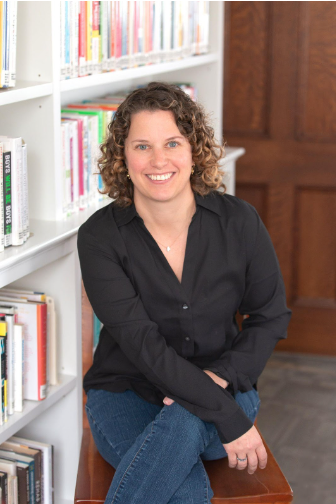
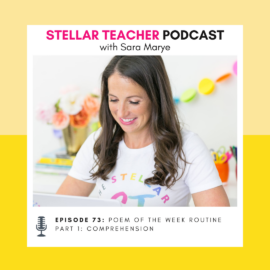


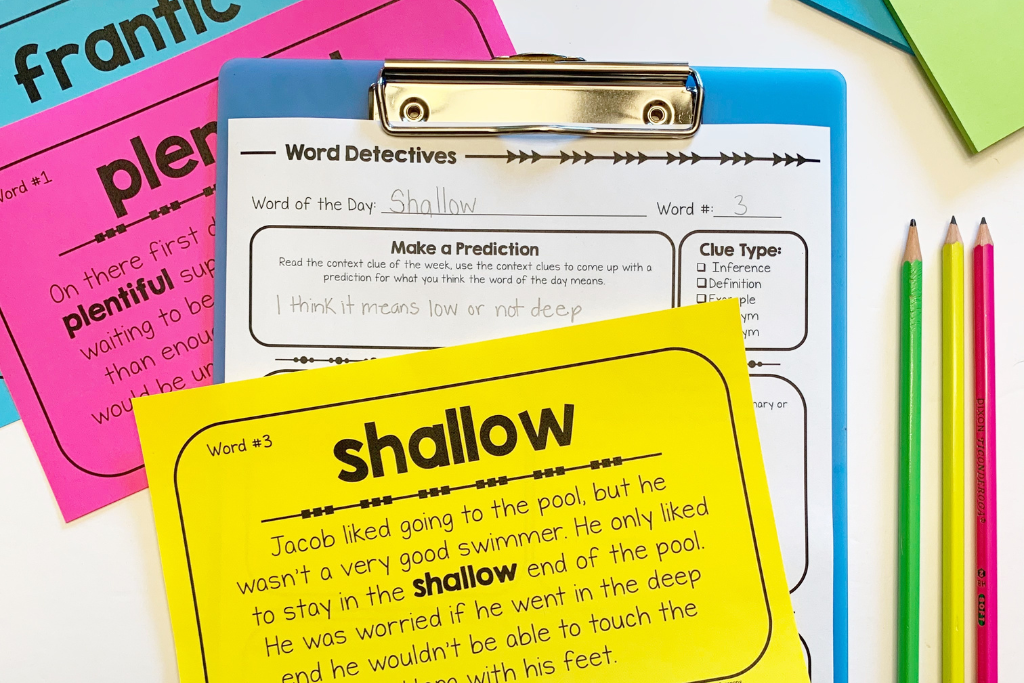
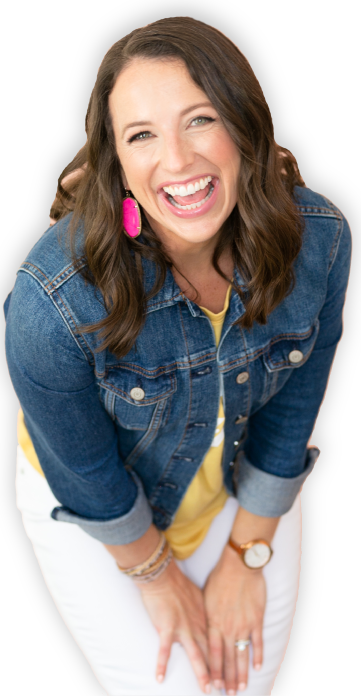
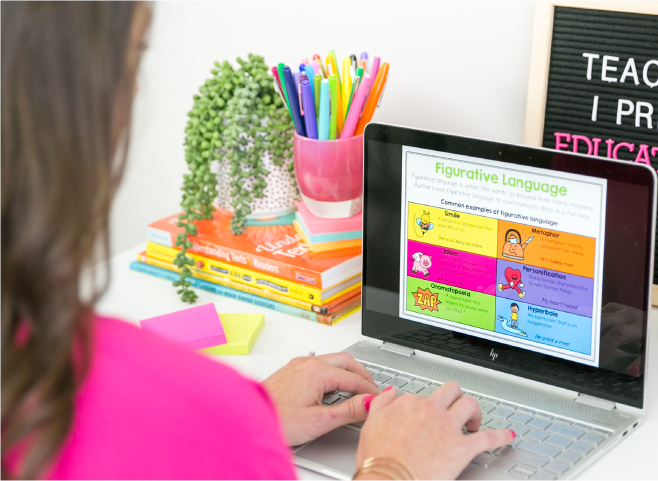
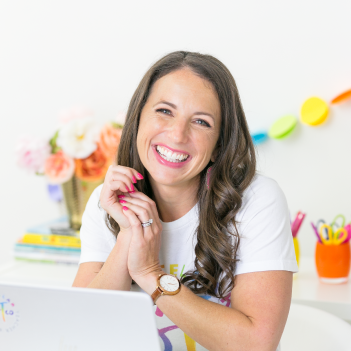
Leave a Comment
You must be logged in to post a comment.